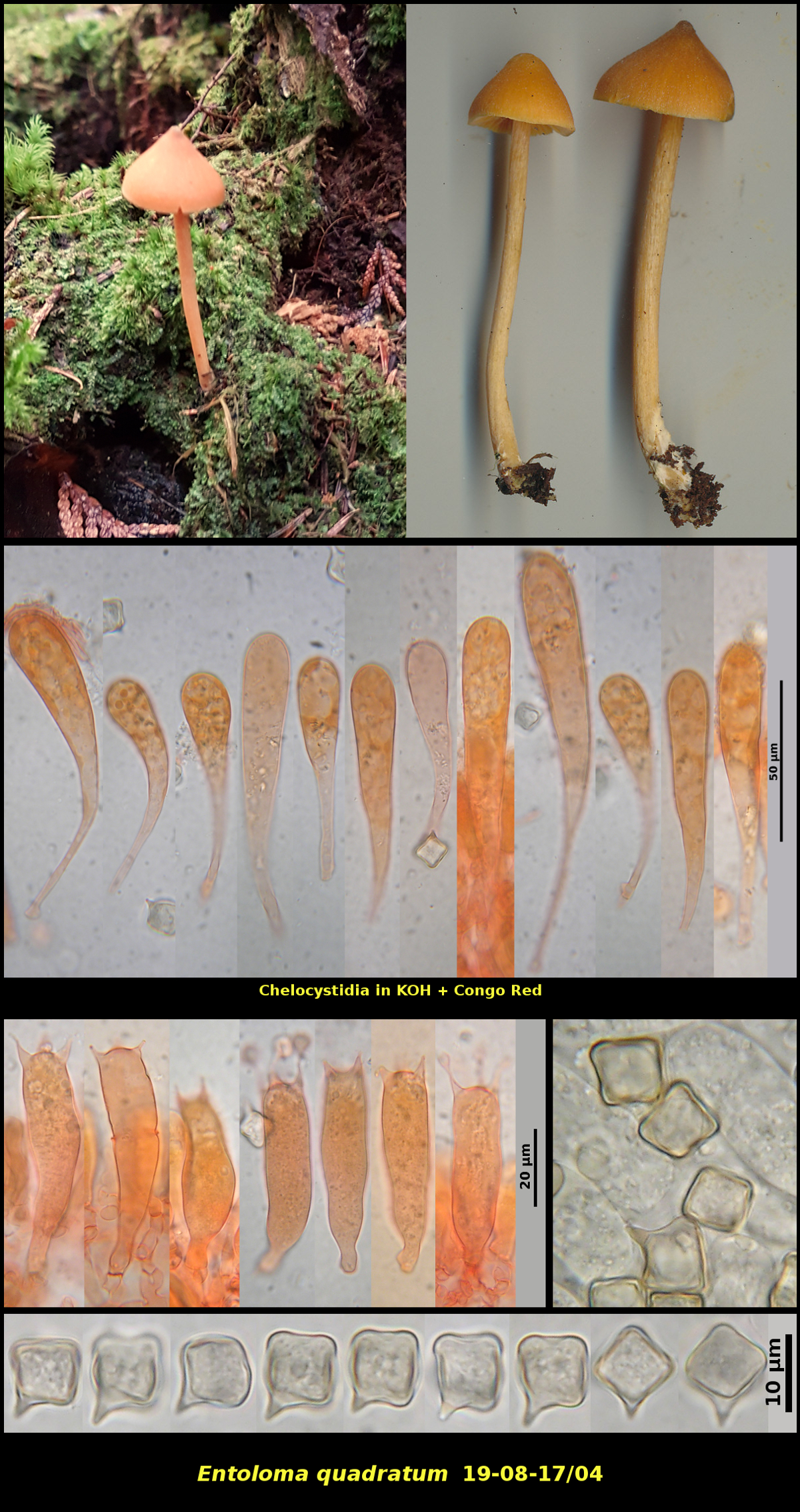Fleshy Fungi of New Brunswick >>
Entoloma quadratum
Entoloma quadratum (Berk. & M.A. Curtis) E. Horak

Scattered (2) in soil, most closely associated with Thuja accidentalis and Abies balsamea, Canoose Flowage Protected Natural Area, New Brunswick. (19-08-17]04)
Basidiospores pink in spore print, cubical, smooth, 8.5-10.6 X 7.9-9.6 μm, D/d = 1.01-1.13 (average[23]: 9.4 X 8.9 μm, D1d = 1.06)
This is an easily-recognized species having an orange conical pileus, disce-shaped basidiospores, long clavate cheilocystidia and prominent clamp connections, as seen at the base of some of the basidia in the illustration. It is common in much of eastern North America, often as single basidiomata but sometimes in small groups.
The peculiar cubical basidiospores are striking. Cubes are not especially common in nature and probably cost the organism extra energy to produce them. Cubical basidiospores are produced by a number of Entoloma species. Horak (Sydowia 28: 171-236. 1976) recognized 43 species worldwide and noted that most are found in tropical and subtropical regions, commonly in the southern hemisphere.
It is notoriously difficult to visualize the three-dimensional shape of basidiospores of Entoloma. The French mycologist Henri Romagnesi, who published extensively on theis genus (as Rhodophyllus), placed great emphasis on the base of the basidiospore and whether it was flat or forming a sharp edge. Later workers have experienced difficulty in using this character and have largely abandoned it. The cubical spores of E. quadratum are considerably easier to interpret than those of most other members of the genus, yet still require some thought. It is easiest to picture them as a single die, with the apiculus arising from one of the corners. The illustration above shows several spores in side view and, the two at right, in top view. Both the top and bottom, as well as the sides, are flat. In microscopic mounts most of the spores come to rest on a flat side, as seen in the photo taken from the surface of a lamella.
Entoloma quadratum is sometimes treated as a member of the genus Inocephalus. Although the arguements for this are sound, there is still considerable controversy over the generic placement of the species of Entolomataceae and we have chosen to maintain them at the New Brunswick Museum under Entoloma.
Photograph: D. Malloch (19-08-17]04).